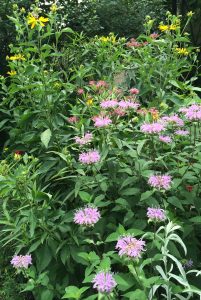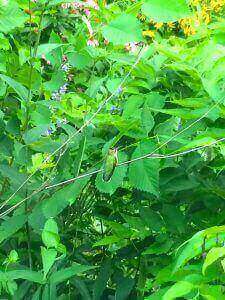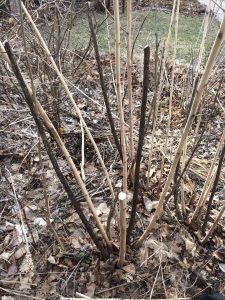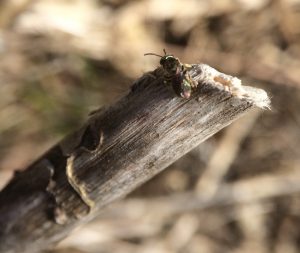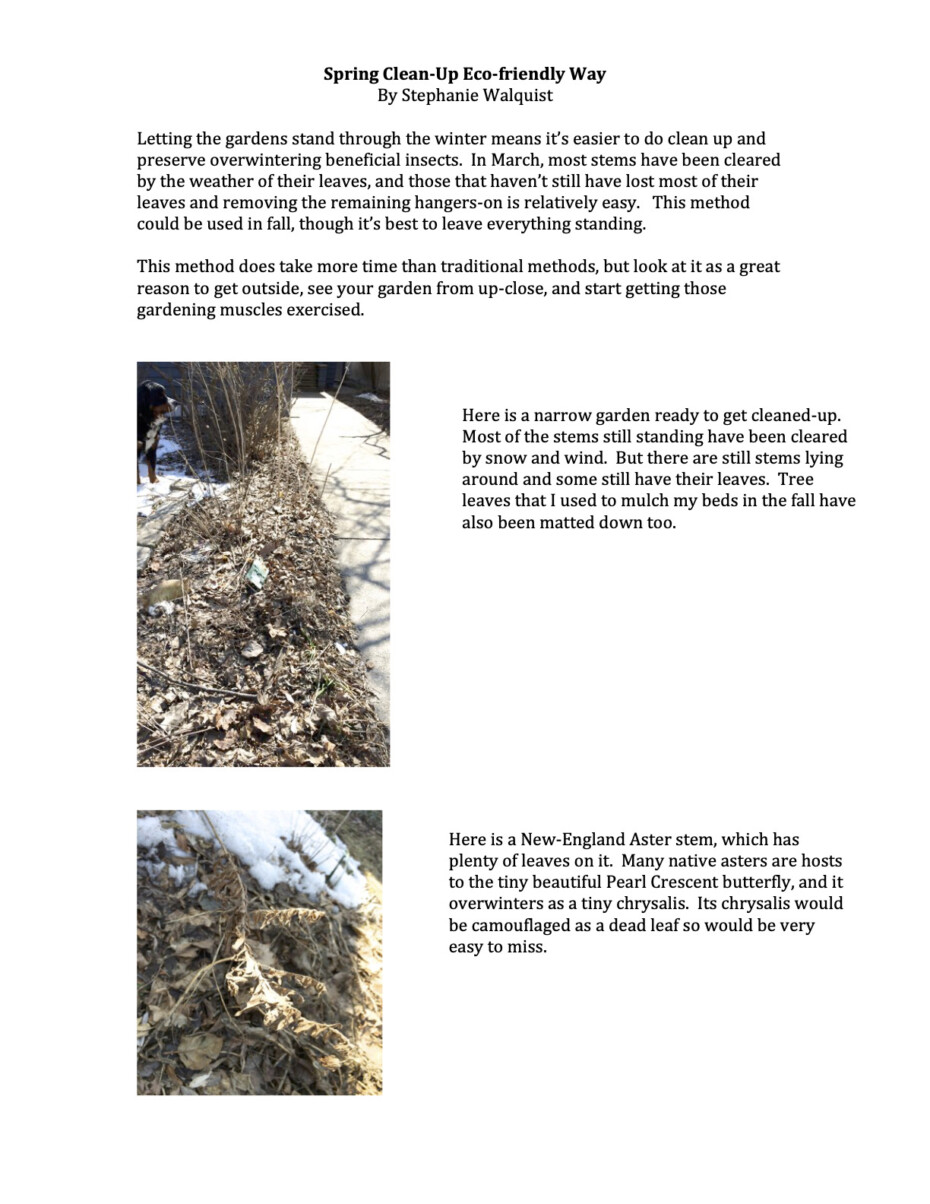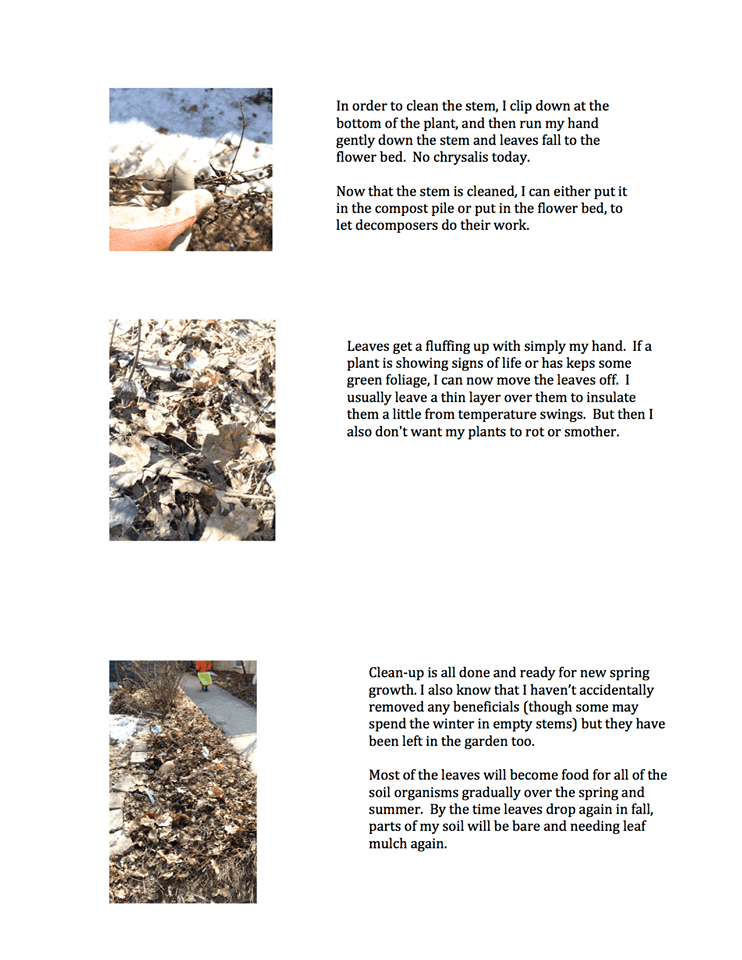Hold your rake! Clearing out your garden can backfire. Raking everything out and tossing into yard bags removes the building blocks of soil and destroys beneficial insects (butterflies, moths, fireflies, etc) that found a safe place in your garden during the winter.
You can learn more about some of these animals in this post: What’s in a Leaf Pile. Read the below photo tutorial to learn how to get your garden ready for spring and summer without destroying the beneficial animals that could be there.
2017 update: Having learned about cavity-nesting bees from Heather Holm and Xerces Society, it’s important to keep some stems standing to provide places for them to nest and overwinter. You can trim some to 12-15″. in height. 2018 update: Keeping dead stems, particularly of tall plants, are a preferred perching spot for many birds (including hummingbirds!). Photos below.
2023 Update: Last year, there was advice that hit social media stating that you could safely clean out your garden after a week of 50 degree temps. This advice claimed that all the insects that had been hibernating would have completed their life cycles and left the garden.
This advice is too simplistic and inaccurate. Not all overwintering animals will have completed their life cycles during that brief window of time. Even if you left the garden standing through the winter, waited to do clean up, but still raked, cut everything down, and then tossed all that material into yard waste bags, you would still be killing the animals you wanted to protect. Here is Doug Tallamy’s explanation about the staggered life cycles of animals. He explains why it’s best to either not clean up at all or do some kind of thoughtful, modified cleanup like we suggest, especially if you need to keep the front looking more acceptable for neighbors: Leaf Litter: Love It and Leave It
Xerces Society has in-depth information about the importance of winter habitats for pollinators and other animals. Here is a very helpful visual about how cavity-nesting bees use cut stems: Save the Stems
